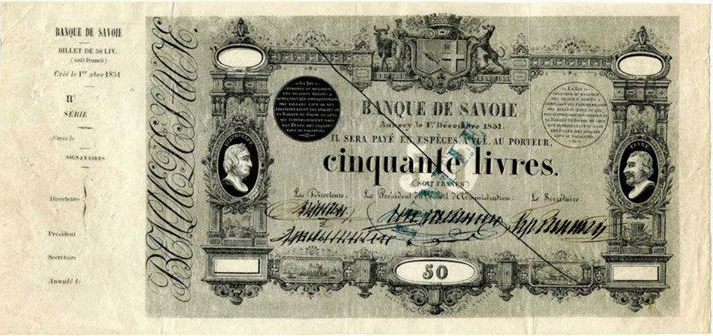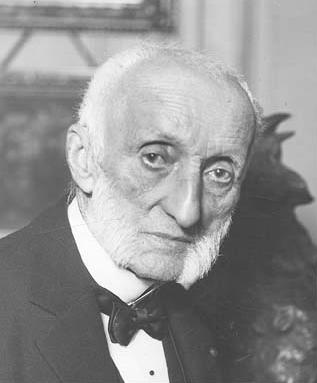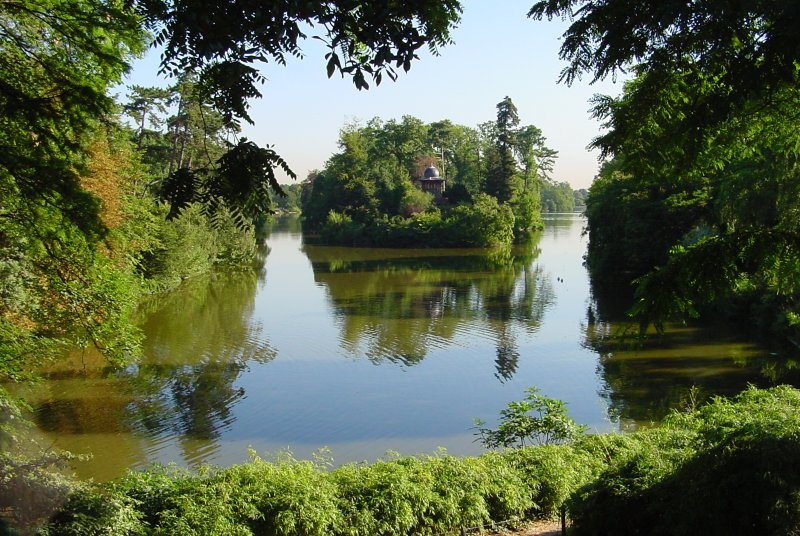|
Louis Frémy
Louis Frémy (April 2, 1805, Saint-Fargeau - March 16, 1891, Paris) was a French civil servant, politician and banker. Early life and family Frémy was born in Saint-Fargeau of Xavier Louis Maurice Frémy (1757-1807), who had been the town's mayor since October 1803, and Charlotte née Navier. His father died when he was only two years old and he was raised by his mother. He studied at the Collège Sainte-Barbe in Paris, then at the Faculty of Law of Paris, Faculty of Law and established himself as a lawyer in Paris in 1829. In 1837 he married Louise Alexandrine Delacour; they had a son, Paul, born in 1848. In 1841, Frémy acquired a country house, the outside Saint-Sauveur-en-Puisaye, a rural town near Saint-Fargeau. In 1844, he purchased a mansion at the nearby hamlet of L'Orme-du-Pont, in which he subsequently established a farming school that operated from 1847 to 1878. He also built a holiday villa on the in Nice. Official positions In 1831, Frémy became mayor of Sai ... [...More Info...] [...Related Items...] OR: [Wikipedia] [Google] [Baidu] |
Departments Of France
In the administrative divisions of France, the department (, ) is one of the three levels of government under the national level ("territorial collectivity, territorial collectivities"), between the Regions of France, administrative regions and the Communes of France, communes. There are a total of 101 departments, consisting of ninety-six departments in metropolitan France, and five Overseas department and region, overseas departments, which are also classified as overseas regions. Departments are further subdivided into 333 Arrondissements of France, arrondissements and 2,054 Cantons of France, cantons (as of 2023). These last two levels of government have no political autonomy, instead serving as the administrative basis for the local organisation of police, fire departments, and, in certain cases, elections. Each department is administered by an elected body called a departmental council (France), departmental council ( , ). From 1800 to April 2015, these were called gene ... [...More Info...] [...Related Items...] OR: [Wikipedia] [Google] [Baidu] |
Bank Of Savoy
The Bank of Savoy (, also referred to under that name in Italian) was a bank of issue of the Kingdom of Sardinia, established in 1851 and based in Annecy and Chambéry. As a consequence of France's annexation of the former Duchy of Savoy under the Treaty of Turin (1860), the Bank of Savoy ceded its money-issuance role to the Bank of France in 1865. Kingdom of Sardinia The Bank of Savoy was established by Sardinian Royal Law of , succeeding the Banque d'Annecy which had been created by royal edict of . It was the kingdom's second bank of issue following the establishment two years earlier of the National Bank in the Sardinian States. Its territorial scope was focused on the former Duchy of Savoy, with principal seat in Annecy and a secondary seat (or branch office) in Chambéry, and it received the privilege to mint coins and issue paper money with legal tender status in Savoy. Its head office building in Annecy was the , a historic building erected in the late 1680s. The Bank o ... [...More Info...] [...Related Items...] OR: [Wikipedia] [Google] [Baidu] |
Bank Of France
The Bank of France ( ) is the national central bank for France within the Eurosystem. It was the French central bank between 1800 and 1998, issuing the French franc. It does not translate its name to English, and thus calls itself ''Banque de France'' in all English communications. The Bank of France was originally established by Napoleon Bonaparte as a private-sector corporation with unique public status. It was granted note-issuance monopoly in Paris in 1803 and in the entire country in 1848. Long independent from direct political interference, it was brought under government control in 1936 and eventually nationalized in 1945. While other banks of issue were established in the French colonial empire, the Bank of France remained Metropolitan France's sole monetary authority until France's adoption of the euro as its currency. The Bank of France long held high prestige as an anchor of financial stability, especially before the monetary turmoil that followed World War I. In 1 ... [...More Info...] [...Related Items...] OR: [Wikipedia] [Google] [Baidu] |
Crédit Agricole
Crédit Agricole Group (), sometimes called La banque verte (, , due to its historical ties to farming), is a French international banking group and the world's largest cooperative financial institution. It is the second largest bank in France, after BNP Paribas, as well as the third largest in Europe and tenth largest in the world. It consists of a network of Crédit Agricole local banks, 39 Agricole regional banks and a central institute, the Crédit Agricole S.A.. It is listed through Crédit Agricole S.A., as an intermediate holding company, on Euronext Paris' first market and is part of the CAC 40 stock market index. Local banks of the group owned the regional banks, in turn the regional banks majority owned the S.A. via a holding company, in turn the S.A. owned part of the subsidiaries of the group, such as LCL, the Italian network and the CIB unit. It is considered to be a systemically important bank by the Financial Stability Board. It was the title sponsor of the Cr� ... [...More Info...] [...Related Items...] OR: [Wikipedia] [Google] [Baidu] |
Pereire Brothers
Émile Pereire (3 December 1800, Bordeaux - 5 January 1875, Paris) and his brother Isaac Pereire (25 November 1806, Bordeaux – 12 July 1880, Gretz-Armainvilliers) were major figures in the development of France's finance and infrastructure during the Second French Empire. The Pereire brothers challenged the dominance of the Rothschilds in continental European finance, known at the time as ''haute finance''. Their attempt was temporarily successful, and even though it collapsed in the late 1860s, it contributed to a more developed and vibrant economic landscape. Like the Rothschilds, the Pereires were Jews, but unlike them, they were Sephardi of Portuguese origin. Family The brothers' grandfather was Jacob Rodrigues Pereira, one of the inventors of sign language for the deaf, who was born in Spain and established himself in France in 1741, where he became an interpreter for King Louis XV. Jacob Rodrigues Pereire (as he went by in French) married Miriam Lopès Dias, a Sephardic ... [...More Info...] [...Related Items...] OR: [Wikipedia] [Google] [Baidu] |
Charles Le Bègue De Germiny
Charles Gabriel Le Bègue de Germiny (3 November 1799 – 22 February 1871) was a French financier and politician. He was Minister of Finance during the French Second Republic, and governor of the Banque de France. Early years Charles Gabriel Le Bègue, Count of Germiny was born on 3 November 1799 (12 Brumaire Year viii) in Cliponville, Seine-Maritime. His father and his father-in-law, Jean-Georges Humann, were peers of France. Humann was associated with him in founding the ''Société des houillères et fonderies de l’Aveyron'' (Aveyron colliery and foundry) in June 1826, with Germiny as president. After this he was involved in many companies including the ''Fonderies et forges d’Alais'' ( Alais foundry and forge), the Paris-Orléans railway and the ''Nationale'', a fire and life insurance company (from 1851). Germiny pursued a career with the administration in parallel. In 1832 he joined the ''Conseil d'État'' (Council of State) and was named ''maître des requêtes'' ... [...More Info...] [...Related Items...] OR: [Wikipedia] [Google] [Baidu] |
Crédit Foncier De France
Crédit Foncier de France (, CFF) was a major French bank, active from 1852 to 2019 when its activities were entirely subsumed into Groupe BPCE, although the brand name appears to remain active. History The Crédit Foncier (English: landed credit) initially made loans to commune in France, communes. The movement was initiated by Louis Wolowski and Count Xavier Branicki, and sanctioned by Emperor Napoleon III of France, Napoleon III in 1852 in an attempt to modernize the medieval French banking system and expand French investment outside Europe. Its name became the "Banque Foncière of Paris". Similar institutions at Nevers and Marseille were amalgamated into one under the title of "Crédit Foncier de France". The amount of the loan could not exceed half of the value of the property pledged or hypothecated, and that the repayment of the loan was by an Annuity (finance theory), annuity, which included the interest and part of the principal, terminable at a certain date. The Crédi ... [...More Info...] [...Related Items...] OR: [Wikipedia] [Google] [Baidu] |
Second French Empire
The Second French Empire, officially the French Empire, was the government of France from 1852 to 1870. It was established on 2 December 1852 by Louis-Napoléon Bonaparte, president of France under the French Second Republic, who proclaimed himself Emperor of the French as Napoleon III. The period was one of significant achievements in infrastructure and economy, while France reasserted itself as the dominant power in Europe. Historians in the 1930s and 1940s disparaged the Second Empire as a precursor of fascism, but by the late 20th century it was re-evaluated as an example of a modernizing regime. Historians have generally given the Second Empire negative evaluations on its foreign policy, and somewhat more positive assessments of domestic policies, especially after Napoleon III liberalised his rule after 1858. He promoted French business and exports. The greatest achievements included a railway network that facilitated commerce and tied the nation together with Paris a ... [...More Info...] [...Related Items...] OR: [Wikipedia] [Google] [Baidu] |
Georges-Eugène Haussmann
Georges-Eugène Haussmann (; 27 March 180911 January 1891), commonly known as Baron Haussmann, was a French official who served as prefect of Seine (1853–1870), chosen by Emperor Napoleon III to carry out a massive urban renewal programme of new boulevards, parks and public works in Paris commonly referred to as Haussmann's renovation of Paris.Joconde – visites guidées – zooms – baron Haussmann 2012-03-05 Critics forced his dismissal in 1870, but his vision of the city still defines central Paris today. Biography Origins and early career Haussmann was born on 27 March 1809 ...[...More Info...] [...Related Items...] OR: [Wikipedia] [Google] [Baidu] |
Napoleon III
Napoleon III (Charles-Louis Napoléon Bonaparte; 20 April 18089 January 1873) was President of France from 1848 to 1852 and then Emperor of the French from 1852 until his deposition in 1870. He was the first president, second emperor, and last monarch of France. Prior to his reign, Napoleon III was known as Louis Napoleon Bonaparte. He was born at the height of the First French Empire in the Tuileries Palace at Paris, the son of Louis Bonaparte, King of Holland (r. 1806–1810), and Hortense de Beauharnais, and paternal nephew of the reigning Emperor Napoleon I. It would only be two months following his birth that he, in accordance with Napoleon I's dynastic naming policy, would be bestowed the name of Charles-Louis Napoleon, however, shortly thereafter, Charles was removed from his name. Louis Napoleon Bonaparte was the first and only president of the French Second Republic, 1848 French presidential election, elected in 1848. He 1851 French coup d'état, seized power by force i ... [...More Info...] [...Related Items...] OR: [Wikipedia] [Google] [Baidu] |







